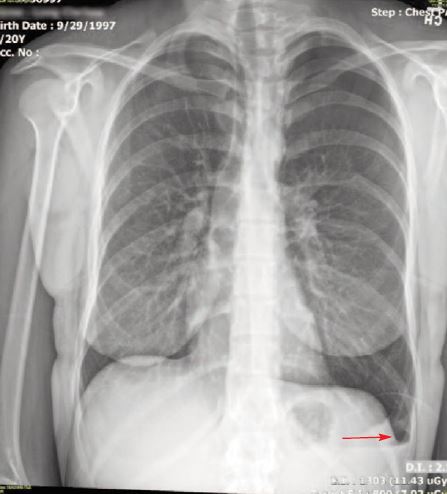Published on
Differential Diagnosis
- Acute aortic dissection
- Acute pericarditis
- Pediatric acute respiratory distress syndrome
- Primary spontaneous pneumothorax
- Pulmonary embolism
Diagnosis
The patient has primary spontaneous pneumothorax, which occurs most often in patients <35 years of age who have no underlying lung disease. Note the lack of lung markings in the left lower lobe at the site of the costophrenic angle.
Learnings
- People with a tall, thin build are more likely to develop a primary spontaneous pneumothorax
- Symptoms can include chest pain, dyspnea, tachycardia, and hypotension
- More concerning symptoms of tension pneumothorax include tachycardia, tachypnea, hypotension, lack of breath sounds on the affected side, increased jugular venous distension, and tracheal deviation
Pearls for Urgent Care Management and Consideration for Transfer
- For patients with a relatively small pneumothorax, administering oxygen with follow-up in the urgent care clinic or with the patient’s primary care physician is appropriate
- Larger pneumothoraces or repeat episodes may warrant chest tube drainage. Surgery may also be considered in some patients
- A tension pneumothorax with hemodynamic instability or mental status change should undergo immediate needle decompression
A 20-Year-Old Woman with Acute Chest Pain
1 2

